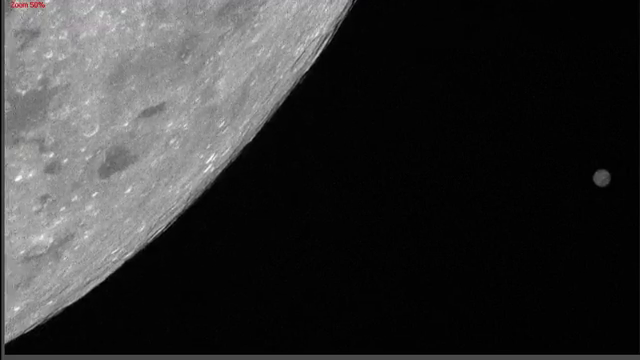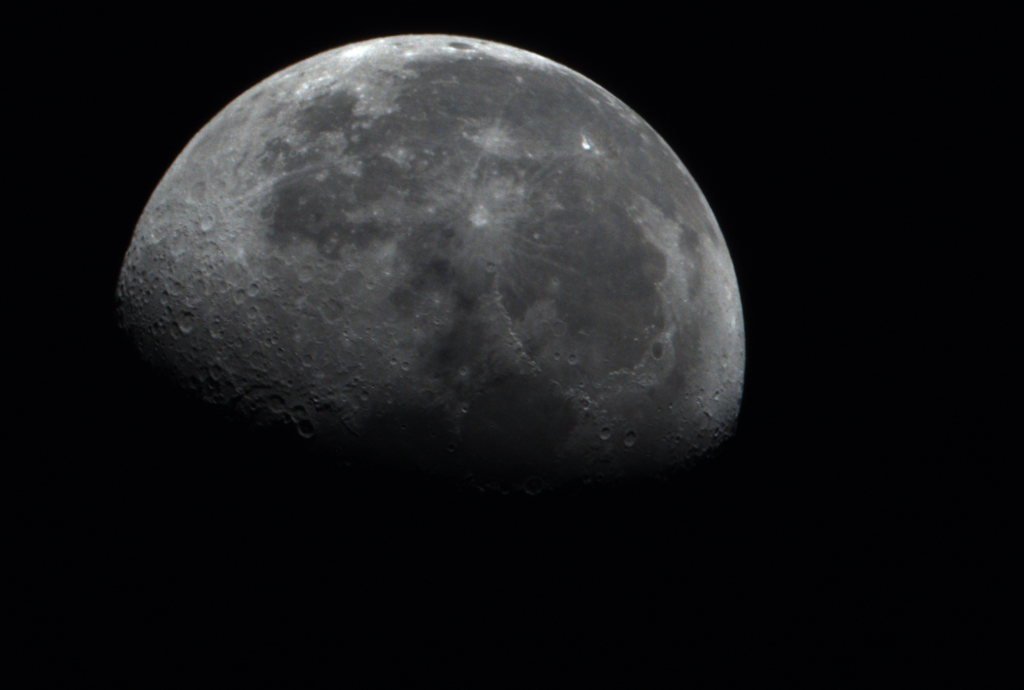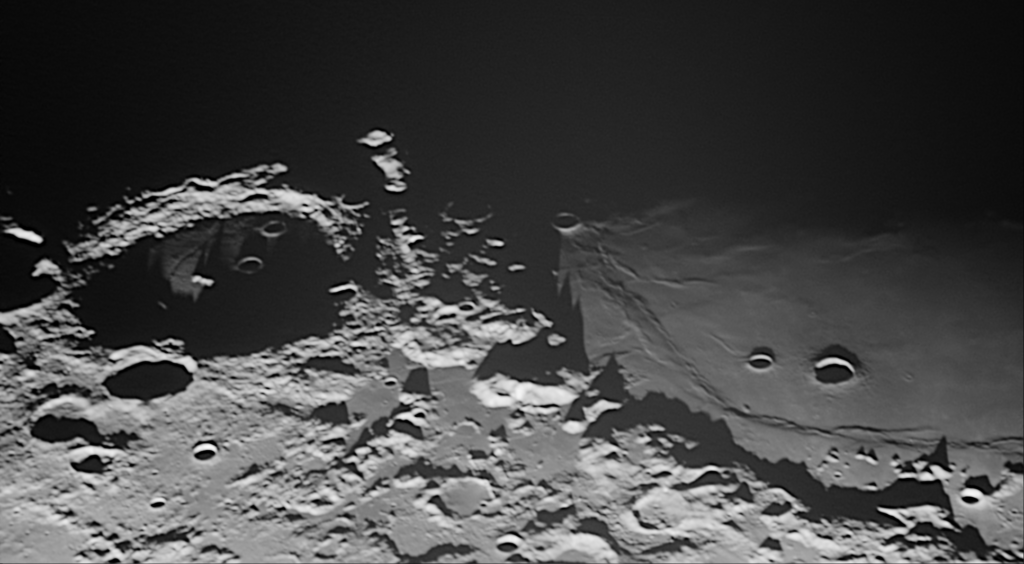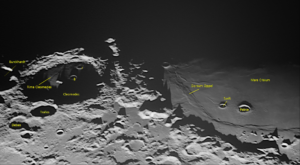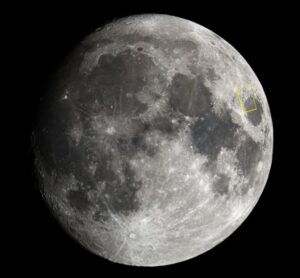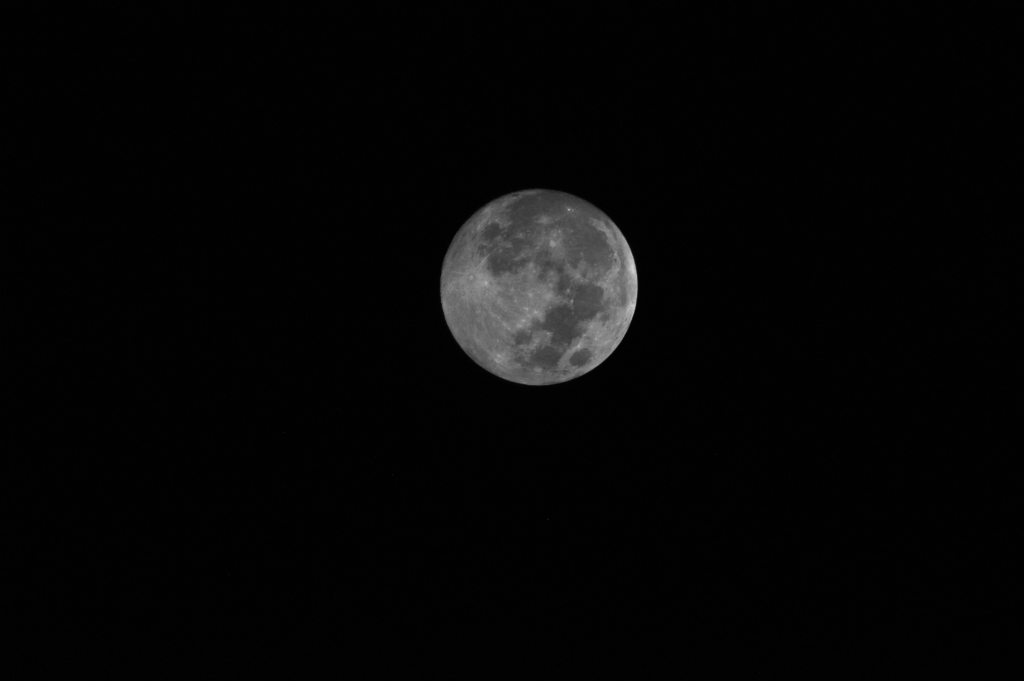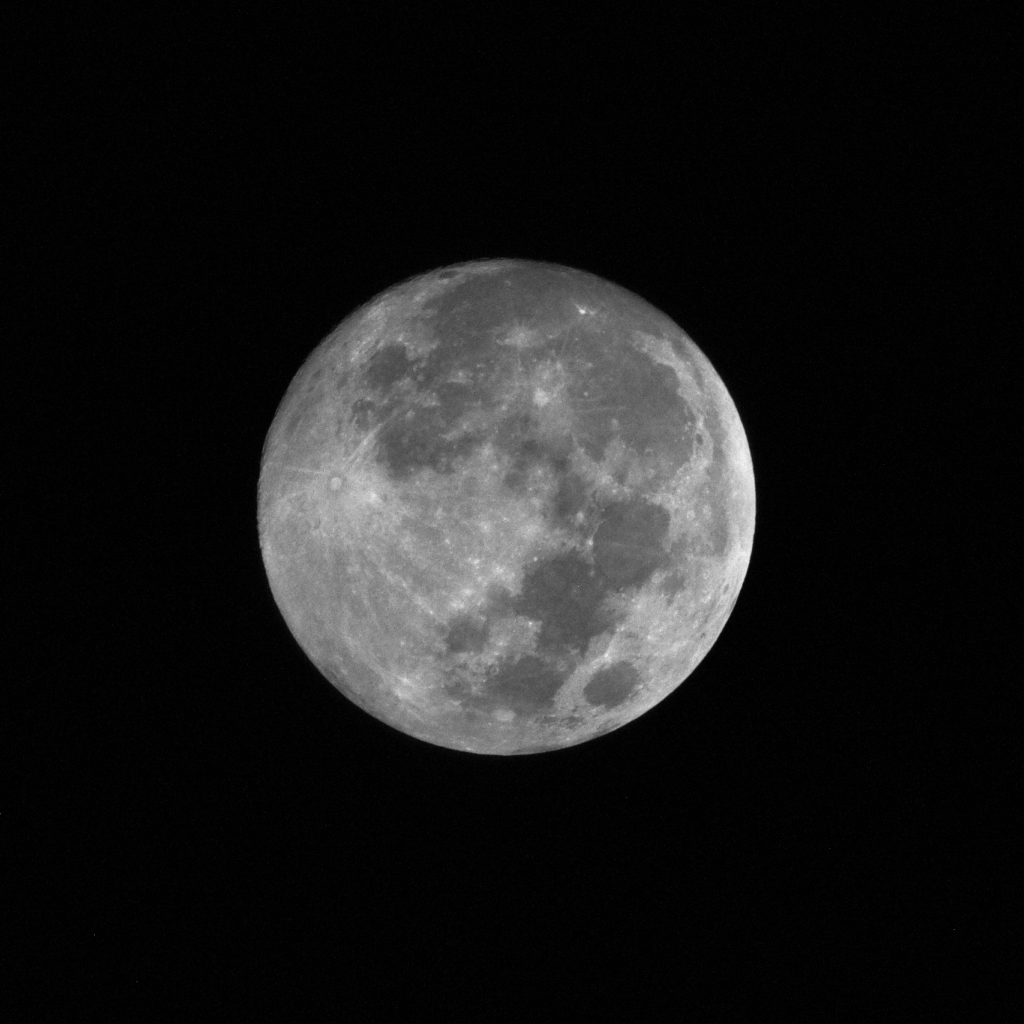I got up fairly early to see if I could get a decent image of Venus before the Sun rose high enough to ruin the seeing. The sky was very clear with Orion standing astride the meridian. Unfortunately, clouds moved in well before Venus cleared the tree line and the attempt to image it was thwarted.
However, while waiting for Venus I imaged Reiner Gamma on the waning crescent Moon. The feature is located in Oceanus Procellarum (Ocean of Storms).
Over time, lunar surface material darkens due to the constant impact of the solar wind. This means newer material on the surface looks brighter than older material. Obvious examples are the bright rays extending out from one of the Moon’s youngest craters – Tycho.
Reiner Gamma is classified as a lunar swirl. There is no crater there, the markings making up the feature are all just brightness differences in the surface material. Orbiters circling the Moon have detected relatively strong, highly localized, magnetic fields associated with lunar swirls. Solar wind is made up of electrically charged particles and their paths of motion are subject to magnetic field influence. The current theory is the magnetic fields associated with lunar swirls act somewhat as force fields that deflect the solar particles and reduce the darkening effects.
Also visible in the image upper left is the Marius Hills volcanic dome field. This location was one of the proposed landing sites for Apollo 15. A volcanic dome is thought to be a low relief shield volcano formed by thicker lava than formed the mare. The area is also home to the recently discovered “Marius Hole” which is thought to be a skylight into a subsurface lava tube.
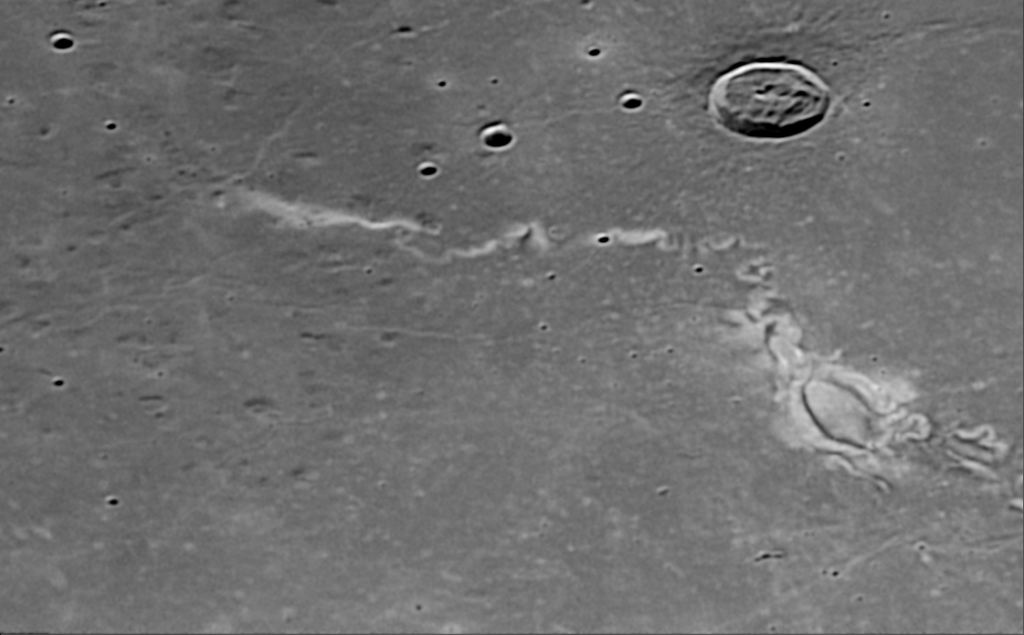
Reiner Gamma[(V)C:1655×0.48ms]
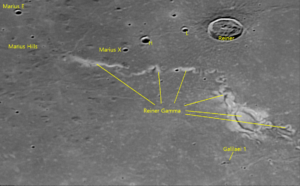 Reiner Gamma[(v)C:1655×0.48ms] |
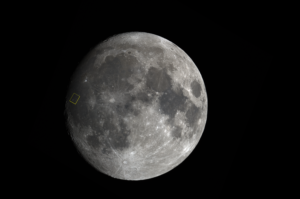
|
